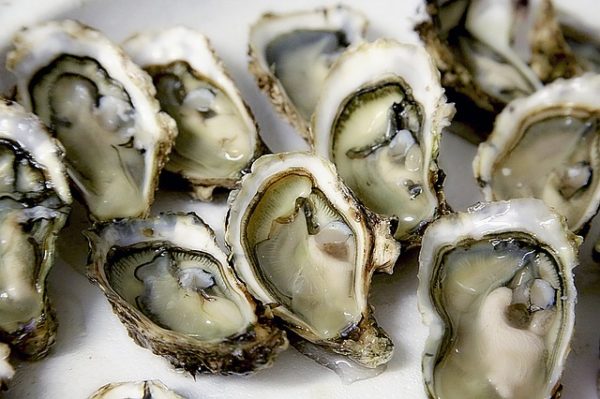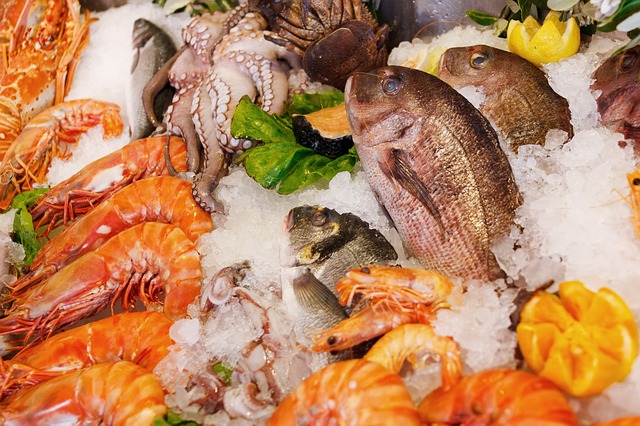Some benefits of eating seafood…
The world’s human population consumes over 1,000 different species of seafood, that grow in a wide variety of habitats and geographic locations. Seafood provides many nutritional benefits, such high-quality protein, iodine, omega-3 fatty acids, and vitamin D.
Fish is also considered one of the most heart-healthy foods you can eat; in a large US study, men who ate one or more servings of fish a week had a 15% lower risk of heart disease (Virtanen, JK et al, 2008). Increased brain health, better mood, and possible reduction in the risk of autoimmune disease are just a few additional benefits. Easy to prepare, fish is a delicious addition to a healthy diet.
Some risks of eating seafood…
The risk of potential food safety hazards with seafood is significantly higher than with meat. High levels of the free unbound water and nutrient availability combined with the psychrophilic and psychrotrophic character of seafood-inherent microflora make seafood products more susceptible to a wide spectrum of microbial safety and quality issues than foods derived from terrestrial animals (Jaczynski, 2008).
Although fish is one of the healthiest foods on the planet, high microbial standards are difficult to maintain. Potential food safety hazards of aquaculture products include foodborne trematode infections, the foodborne diseases caused by pathogenic bacteria and viruses, drug residues, and agrochemical and toxic metal contamination (e.g., mercury residues).
Fortunately, during storage, indigenous spoilage bacteria usually outgrow the indigenous pathogenic bacteria on seafood and fish spoils before becoming toxic; unfortunately, exceptions to this rule exist. An important example is L. monocytogenes, which can grow to harmful concentrations without any warning from spoilage (Ngadi et al, 2012).

What are some pathways of contamination?
Bacteria commonly found in the environment, like psychotropic Clostridium botulinum type E and Listeria monocytogenes may easily contaminate fish and shellfish. L. monocytogenes has been considered a leading cause of death amongst foodborne bacterial pathogens (Paoli et al., 2005). The fact that bacteria on fish that are from temperate water are generally psychotrophic and able to survive and even thrive at refrigerated temperatures is a major concern.
The vast majority of microbiological research on the subject of the contamination of fish has been directed to the organisms that are indigenous to seafood rather than to those that cross-contaminate during processing. However, the increasing proportion of the total global catch that is being used for international trade and the changes in technological practices that have been implemented means that non-indigenous microorganisms may severely affect the safety of seafood products.
It is important to note that seafood is subject to accelerated microbial contamination and growth if storage and handling are not carried out at an extremely high standard; after the fish has been killed, its immune system collapses causing the bacteria living on the surface to begin degrading the sterile muscle tissue (Skara, et al, 2012).
What are some methods of seafood decontamination?
There are three main categories for the current methods of seafood decontamination: chemical, thermal and combinations of two or more of the two (Skara, et al, 2012).
Cold plasma, otherwise known as nonthermal plasm, cool plasma, or gas plasma, is non-thermal antimicrobial process that is being developed for food industry applications. In the case of cold plasma, the feed gas is ionized using high-voltage electrical discharges, microwaves, or other energy sources. The resulting plasma is a complex mixture of ions, free electrons, radicals and other reactive chemical species (Niemira, 2014).
Plasma treatment creates antimicrobial effects from ozone, charged particles, oxygen radicals, and the generation of UV radiation which damage DNA, and/or proteins, and damage microbial membranes.

Top 10 places in a processing plant where L. monocytogenes is able to survive and grow…
Almost all bacteria require four essential elements for survival and growth. These are: a source of food, a source of water, adequate temperature and time. The following is a list (in no particular order), where Listeria is not only able to survive, but also to grow and likely result in cross-contamination when left unchecked.
- Inside and around drains
- Inside cracked floors (e.g., production room, coolers, chillers, freezers)
- Inside crevices at the bottom of employee shoes or boots
- In boot sanitation mats (e.g., after sanitizer depletes and employees transfer food debris from shoes onto the mat)
- In crevices present in cracked plastic curtains
- Inside catching pan of cooling units (e.g., coolers and chillers)
- Inside slicers (e.g., inside machine, or cracked blade)
- On cracked utensil handles (e.g., knives, spatulas, etc.)
- Under metal plates intended to facilitate unloading of smokehouses
- Inside newly sourced, pre-owned equipment not adequately cleaned and sanitized before installation.
The associated risks can be greatly minimized through a robust environmental testing program.
Why is it important to carefully control L. monocytogenes when producing RTE fish and seafood products?
L. monocytogenes remains a challenging pathogenic organism in the seafood industry as a whole. As a result of its pervasive presence, the possibility for it to contaminate products post-processing, and its capacity to multiply even when the temperature is as low as 0 degrees Celsius, it is a target for control in seafood processing.
It has been established that foods that contain low levels of L. monocytogenes (<100 CFU/g) pose very little risk to human health; hence, both the inactivation of potential Listeria present on the product as well as the growth limitations of potential survivors are critical factors to ensure food safety (Skara et al., 2011).
SERVICES OFFERED:
Let our extensive background and experience in food safety and process validation help you navigate the regulatory transition under the new SFCRs.
We offer assistance with:
Development of robust environmental monitoring programs geared towards Listeria mono control and prevention
Developing risk-based strategies to measure the effectiveness of sanitation
Setting up thermal controls for cold smoked and hot smoked processes
Thermal process validation and optimization (cold spot evaluation)
Call us for a free consultation. Direct line (+001) 647-963-0182.
References:
Jaczynski, Jacek. “Chapter 6: Application of electron beam to food processing with emphasis on seafood products: inactivation of food-borne pathogens and effects on food quality.” In Food Processing: Methods, Techniques and Trends. Editor: Valerie C. Bellinghouse. Nova Science Publishers, 2008.
Niemira, Brendan. “Cold plasma processing technology makes advances.” Food Safety and Intervention Technologies
Skara, et al., “Chapter 6: Microbial decontamination of seafood.” in Microbial Decontamination in the Food Industry: Novel Methods and Applications. by Ngadi, Michael O., Demirci, Ali. Cambridge: Woodhead Publishing, 2012.
Virtanen JK, Mozaffarian D, Chiuve SE, Rimm EB. Fish consumption and risk of major chronic disease in men.” American Journal of Clinical Nutrition. 2008 Dec; 88(6):1618-25.
